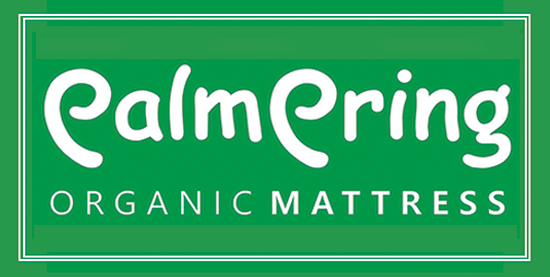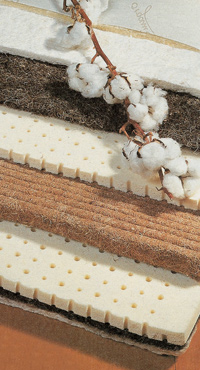- FREE SHIPPING ON ALL ORDERS
Making Our Materials
Creating organic latex and coconut pads is similar to baking using whole ingredients. No pre-made cake mix--it's all made from scratch!
We derive organic latex and coconut fibers from the finest quality sources in Southwestern India. While there are many countries producing organic latex throughout Asia, the finest quality comes from India, and our latex is the absolute best of the best.
Also, the organically-grown rubber trees that produce our organic latex are grown on a separate hillside not treated by pesticides, so they are unpolluted.
Making organic latex Using Lots of "Know-How"
The most difficult part of producing organic latex is the harvesting of rubber milk, which is lengthy and labor intensive. The farmers tap the rubber trees for milk during the early morning hours over a period of 6 months (the typical length of a harvest season). Each rubber tree produces a cup of milk a day and up to 1 kilogram of rubber per season.
This milk is then transformed into foam through the chemical-free Dunlop process, and then it takes only a few hours to create a latex foam pad. The foam is steamed, baked, cleaned, and re-steamed, before it's cut into rectangular pads ready for mattress production.
It takes people with very special skills to bake, steam, cut, and handle all these processes, and our factory has around 150 skilled workers. Many details and lots of "know how" go into the creation of these latex foam pads. It's not an easy process to master, so our final product is the culmination of years of refining an intricate process.
The truth is organic latex is produced in very small percentages compared to other types of latex and commands the highest prices. While other companies blend the organic latex with additional materials and use chemicals in the foaming process in order to reduce costs and speed up the production process, we don't cut any corners!
Creating the Coconut Pad is a Multi-Month Process
We source the organic coconut husk fibers from farmers who have already extracted the coconut oil and separated the inner nut from the remaining fibers, which have been washed, combed, beaten, and dried. It then takes several months to twist this dried fiber into a heavy rope, which is later unraveled, producing a curly fiber perfect for our mattress-making needs.
Over a period of a few hours, we rubberize the curly fibers so that they don't become brittle and fall apart, but become extremely resilient to absorb shocks and weight--similar to the action of a metal spring. After spraying rubber milk onto the dried fibers, we steam and press each layer of fiber in order to form a mattress pad, plus do testing and inspection. Then, the pads are cut into rectangular shapes and readied for mattress production. This process takes less than 1 day.
The final products - latex foam and coconut pads - are shipped to Los Angeles, where they are assembled into mattresses and covered in high-quality certified organic cotton and wool at our factory.

